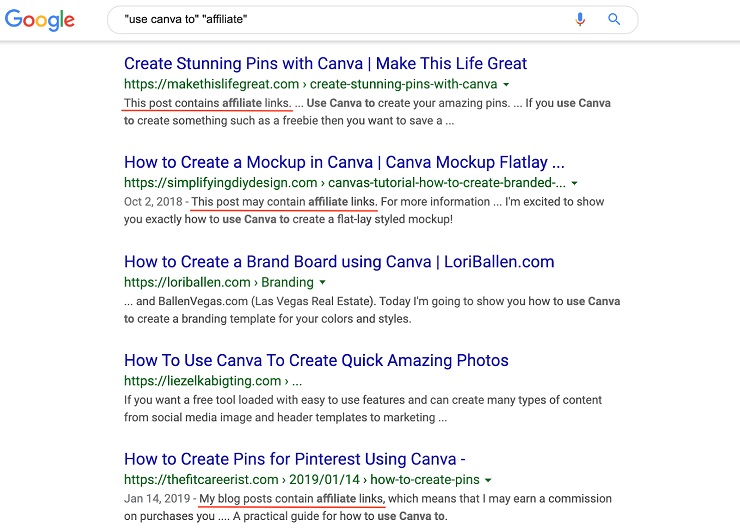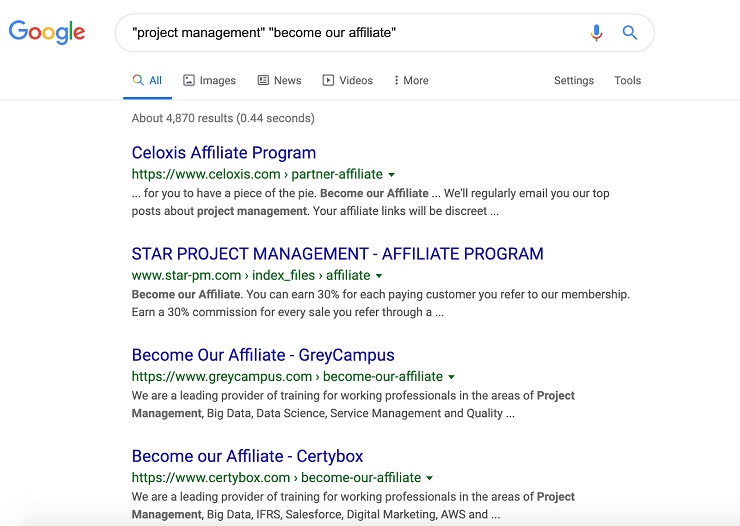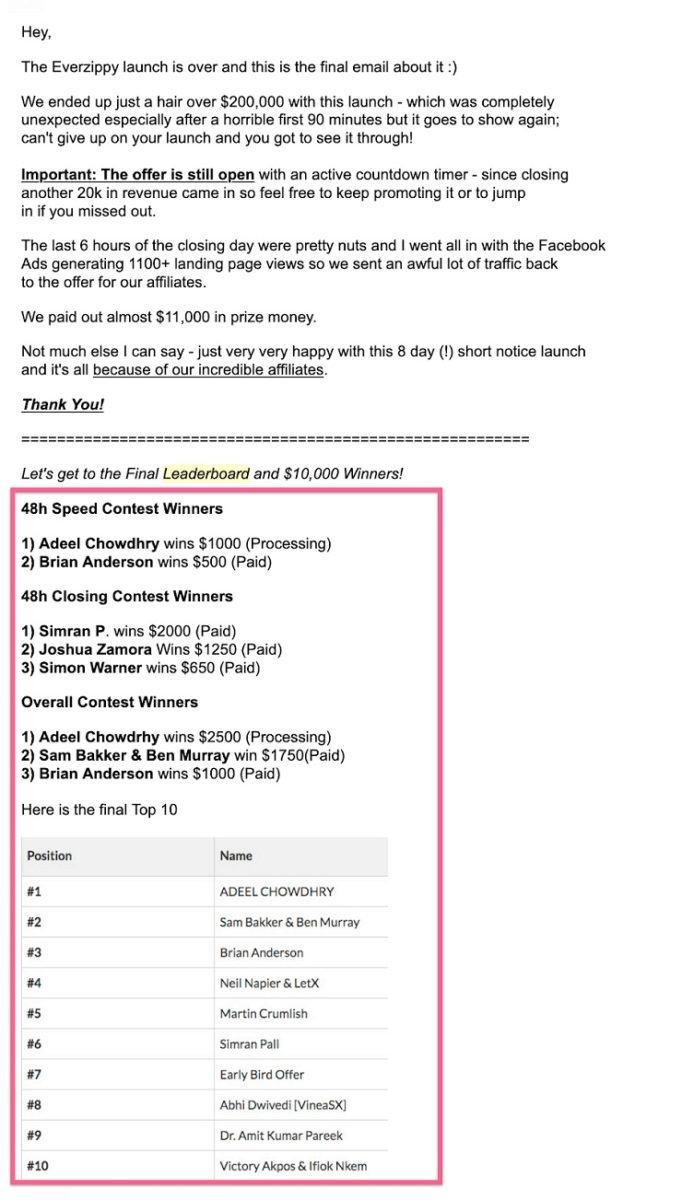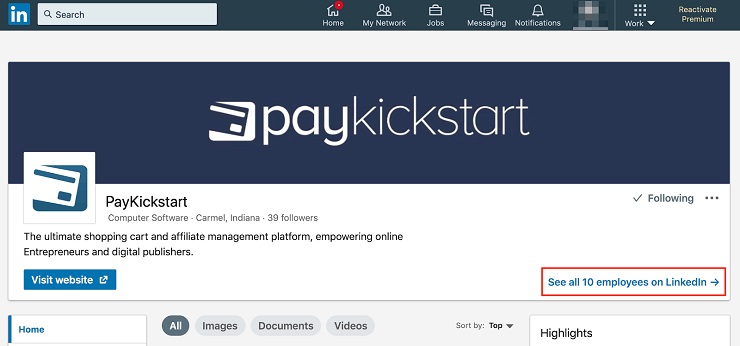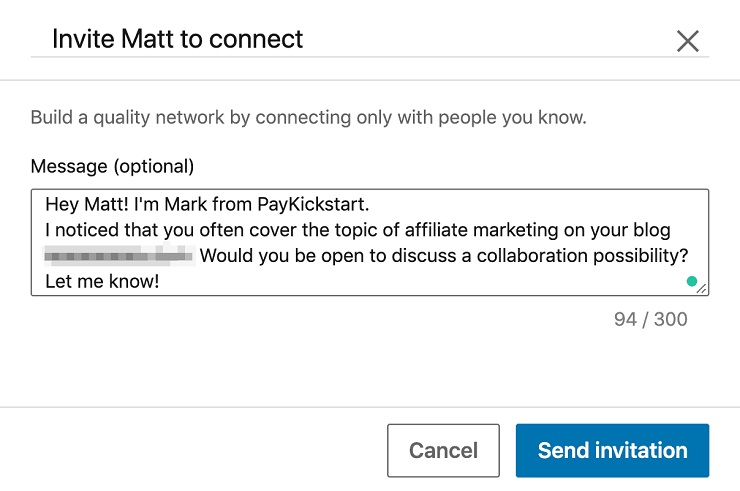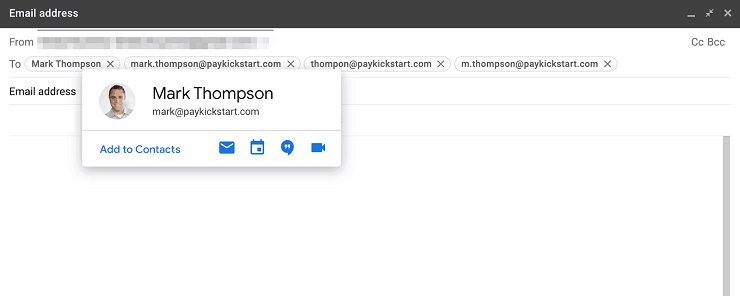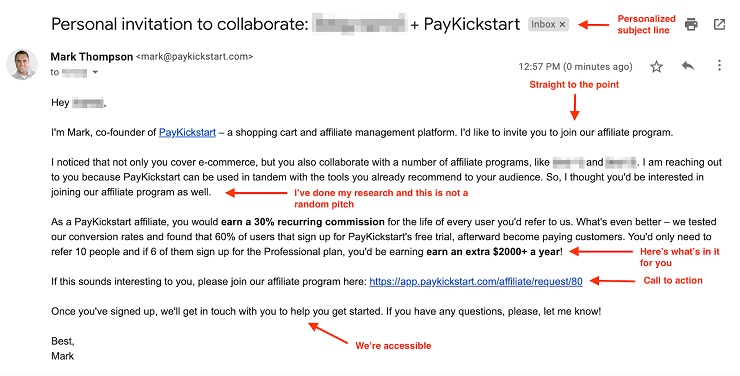I’ll never forget that one morning when I walked into the office, just like any other day, and got fired on the spot. I was left with a mortgage, bills, and a serious panic attack. That’s when I made the decision to become my own boss.
Three years later, my co-founder Matt Callen and I launched PayKickstart, a shopping cart and affiliate management platform, which managed to attract 10,000+ paying customers and generate over a million dollars in sales in its first 72 hours of existence.
As you surely suspect, there was more to this epic start than simply pushing the launch button. To be exact, we developed a carefully crafted list of affiliate partners well before our launch. It took us several months to put together, and when the big day came, we were able to mobilize our network and create the much-needed buzz.
Putting together this network took a lot of work and planning, but the good news is, you can create a ”minimum viable” affiliate network in a matter of weeks. In this article, I’ll reveal all of the tools and tactics that we found effective in building our affiliate network.
But first, let’s make sure we’re on the same page about what affiliate marketing is and why it’s a thing.
What Is Affiliate Marketing?
Affiliate marketing is inviting other people or businesses, called ”affiliates,” to promote your product to their audiences and earn a commission whenever their referrals lead to a purchase. Affiliate commissions usually depend on the product and its pricing, and can be either one-off or recurring.
Both B2C and B2B businesses use affiliate marketing, and for each type of business, it can be highly effective. For B2B businesses, however, it’s more challenging, as their sales cycles tend to be longer, more complex, and involve several decision-makers. For that reason, B2B affiliates must be more authoritative and influential, and you as a business owner must be picky—just any affiliate won’t do.
Why You Should Care About Affiliate Marketing
Research shows that 16% of online purchases in the US are generated through affiliate marketing. Considering that US ecommerce sales reached $547 billion in 2019, you can see the enormous potential this strategy offers.
Today, as many as 38% of companies consider affiliate marketing one of their top customer acquisition methods. And there’s a reason it works. Just one-third of consumers trust brand messaging, while 70% would trust a recommendation from someone they don’t even know. That explains why affiliate recommendations tend to work better than brand advertising.
When compared to many other marketing tactics, working with affiliates is also rather cost-effective, as you only pay a commission when you make sales. For all the reasons mentioned, as well as the fact that affiliate marketing helps both the brand and affiliate to make money, its popularity continues to grow.
Existing vs. Custom Affiliate Networks
Once you’ve made the decision to invest your time in affiliate marketing, there are two routes you can take, each of which has its pros and cons.
First, you can use an existing affiliate marketing network. There are many services out there that bring together brands and affiliates and allow you to start your campaign fast, meaning you don’t need to invest your time in building one from scratch.
What’s more, most professional affiliates are familiar with several such networks and use them to search for offers and products to promote. And on top of that, signing up for an affiliate program, accessing visuals and other branded materials, as well as making commission payments—that’s all handled automatically by the platform. So, from the brand’s perspective, this option is a simpler, more passive take on affiliate marketing.
The other option is building your own network of handpicked affiliates from scratch, which is what we did. Yes, it takes time. Yes, it’s a lot of work. But you end up with a network of highly relevant affiliates, and every single one of them knows your industry, can better understand your product, and therefore, is significantly more effective when promoting it. That’s especially important if you’re in B2B.
When building your network, you can also establish much closer relationships with your affiliates. Why does that matter? In a survey, 34.6% of affiliates said that their relationships with brands were crucial to their business. In fact, affiliates typically join and promote products because of their relationships with the affiliate managers in the company.
As I mentioned, a custom-built affiliate network was the foundation of PayKickstart’s success and helped us make over a million dollars in just three days. I’ll show you how we built it, step by step.
Step 1: Find Relevant Affiliates for Your Product
The first step to building a high-performing network is to find relevant affiliates for your product. For example, when we were building our network for PayKickstart, we looked for people—bloggers, influencers and experts, entrepreneurs, other businesses—who understood ecommerce and affiliate marketing. PayKickstart is an online shopping cart and affiliate management platform, so we wanted our product to be promoted by people familiar with these topics.
Pro tip: The very first thing you want to do is create a fresh spreadsheet. This is where we’ll be putting down all the potential affiliates that we’ll find (more detail in later sections).
Here are five tactics that you can use to find proper affiliates for your product:
1. Find Bloggers Promoting Products in Your Industry
Start with identifying your competitors and other companies with products or services similar or related to yours. For example, if your product is an app for managing social media accounts, you might list companies like Buffer and Hootsuite (other apps for social media management), as well as Canva and Buzzsumo (related tools, often used by people who manage social media).
Pro tip: If you run out of ideas, just google ”tools/products for ” or ”best ”. You’ll find plenty of articles with products that qualify for your list.
Once you’ve gathered all your competitors and related products in one list, the next step is to find people across the web who promote these companies and their products and receive commissions for doing it.
Use search queries like:
- ”use to” + ”affiliate”
- ”use for” + ”affiliate”
- ”try ” + ”affiliate”
- ”go for ” + ”affiliate”
You’ll find blog articles, videos, and other online content, where someone encourages their audience to use these companies’ products, and includes a disclaimer that their content includes affiliate links. In other words, these are the people familiar with your type of products, and they are open to affiliate programs.
For example, we googled ”use Canva to” + ”affiliate”, and found plenty of bloggers who promote this tool and earn a commission:
Add all these blogs to your spreadsheet and when you’re done with this tactic, move to the next one.
2. Find Other Businesses With Affiliate Programs
Knowing how popular affiliate marketing is, it should be no surprise that there are plenty of other businesses in your industry that have affiliate programs. Our experience also shows that these companies are usually more open to promoting other affiliate programs, as long as it’s useful and relevant to their audiences.
So, how do you find other businesses in your industry that have affiliate programs?
First, think of companies or specific products and services that your product improves, adds value to, or is simply helpful to their users. For example, an email marketing platform can help the users of drop-shipping services (online sellers) to boost their sales. Or a time-tracking tool could help the users of a task management app to see how much time they spend on certain tasks. Get the idea?
Next, head to Google and try search queries like:
- “[xyz product/service]” + “affiliate program”
- “[xyz product/service]” + “become our affiliate”
- “become a [xyz company] affiliate”
- “[xyz company]” + “join our affiliate program”
- etc.
Let’s say you have a time-tracking tool and you want to find businesses related to project management. By googling ”project management” + ”become our affiliate”, we get a bunch of such businesses with affiliate programs that we could reach out to.
Again, add all these businesses and their websites to your spreadsheet and go to the next tactic.
3. Find and Follow Companies on Launch Boards
A launch board is an online product launch calendar that provides a list of products that are about to be launched or have recently been released. You’ve certainly heard of Product Hunt, but there are others, too, such as Muncheye.
As you open Muncheye and go to “Categories,” you can pick the niche your product belongs to. For example, for PayKickstart we started with ”ecommerce.”
As you open the chosen category, Muncheye shows all the products in this niche that are soon to be launched. Click on these projects and sign up to receive their updates.
Let me explain why.
Between product launch updates, these companies often use newsletters to celebrate their best affiliates and the commissions they’ve earned. You see where I’m going with this? Newsletters are the place to see the names of affiliates in your niche with the best sales performance.
Take all listed affiliates and find them via Google. Sometimes all that takes is a first and last name. Other times, you might need to dig deeper—try searching the affiliate’s name in combination with the product name they promoted or search terms that include the word ”affiliate.”
4. Use Joint Venture Brokers
Joint venture brokers, or JV brokers, are people or organizations that put businesses in touch with relevant affiliates, and receive commissions when the referred affiliate has made a sale.
In this scenario, as a product owner, you have to pay commissions to both the affiliate and the broker, which means reduced profit. On the other hand, it saves the time you’d spend searching for affiliates yourself. Since time is money, you can do the math and decide whether the services of JV brokers are worth it.
There are plenty of JV broker firms that you can find online by simply doing a search on Google. If you need a recommendation, check Mike Merz and Andy Hussong—we worked with these guys when launching PayKickstart.
When you’re doing your own search, make sure you pay attention to a few details:
- Reputation: Do some background research on the broker you’ve found. Look for reviews and testimonials from other companies.
- Track record: What are their most successful collaborations and biggest clients? What’s their average ”success rate,” meaning, how many JVs follow through with successful promotions?
- Experience: How long has this person or organization been in business? What companies in what industries do they mostly collaborate with?
- Their system: Ask the broker to provide you with a proven strategy for exposing a product to relevant JVs.
5: Find Affiliates in Facebook Groups
The final tactic that we used when finding affiliates for PayKickstart was combing through niche Facebook groups, as well as becoming active members of these groups.
Start with finding relevant groups. Go on Facebook and search for groups where people that have websites, blogs, or YouTube channels hang out. Chances are, these people might be interested in monetizing their content, and, therefore, might be open to collaborations with brands.
For example, just type in ”blog” in the search box and you’ll find several groups, specifically dedicated to blogging and making money:
Join these groups and follow their discussions. This usually takes time, as these groups aren’t primarily used for finding affiliate programs to promote. However, quite regularly, such questions pop up. When they do, swoop in and offer up your network.
Another option is to join Facebook groups that gather affiliates and product owners, and are, in a way, similar to launch boards. Here are a few that we’re following:
Join these groups and let people know about your affiliate network, while keeping your eyes open for affiliates that search for new products to promote.
Step 2: Use the 80/20 Rule to Identify Top Affiliates
By now, your spreadsheet of affiliates should be filled up with a bunch of websites, blogs, names of industry influencers, etc. The problem? It will take forever to find contact info and personally reach out to them with your offer.
Luckily, you don’t have to.
According to one estimate, fewer than 10% of affiliates drive more than 90% of the conversions. That means you have to narrow it down and reach out to only 10% to 20% of these affiliates that have the biggest potential to bring you sales.
Focus on these three metrics:
Relevance
Relevance refers to what topics and industries this content creator generally covers, which will give you an idea of whether he or she is an expert on your topic. You can do a quick audit by using one of many tools that analyze website content and show what keywords it ranks for. To name a few:
- Spyfu
- Moz
- Woorank
For example, this Woorank report shows that the social media managing app Buffer clearly covers the topic ”social media”:
Keep in mind that most of these tools are paid. However, they offer free trials, which might be enough for you to check all the websites on your list. And while such content analysis won’t 100% accurately reflect all topics covered, you’ll be able to quickly filter out websites that are completely irrelevant.
Reach
When you’ve filtered out irrelevant affiliates, focus on the audience. How big is the audience that this affiliate reaches? Does this affiliate have any other channels that he or she uses to communicate with the audience, such as social media accounts, email newsletter, etc.?
Use SimilarWeb, a website that provides web analytics, to check the potential readership of the publications and websites still left on your list. While bigger doesn’t always mean better, it’s still helpful to know the number of eyes and ears the particular affiliate can potentially reach.
Additionally, check their social media followings on Facebook, Twitter, LinkedIn, YouTube, etc., and pay attention to whether they have a newsletter. These are all additional channels for extra audience reach.
Engagement
Finally, pay attention to how engaged the audience is with the content that’s getting published. At the end of the day, there’s little value in millions of social media followers or large website traffic if no one really cares what you’re saying.
Check whether people react to posts—social media posts, blog articles, etc.—by sharing them or adding comments. In fact, more comments usually means that the audience listens and cares about what the affiliate says. At the same time, remember that the quality is more important than the quantity. Scan through the comments and pay attention to whether they’re genuine and raise discussion, or if they’re generic and look spammy.
Step 3: Do the Cold Outreach (and Get a 95% Response Rate)
At this point, you should have identified your potentially best-performing and most relevant affiliates. The next step is to do the cold outreach—contact them one by one and invite them to join your affiliate program.
Before we you do that, here’s what you should have in place:
A tool to manage your affiliate program
Generally, with the tool you choose, you should be able to assign unique links to your affiliates, track the performance and see how much sales each of your affiliates have made, and calculate and pay out commissions. Additionally, it helps if the tool allows you to upload brand visuals (product photos, banners, etc.) that your affiliates can download and use when needed.
There are plenty of tools for these tasks, but to name a few:
- Post Affiliate Pro
- PayKickstart
- Refersion
Proof that your program is profitable
Before affiliates decide to join your program and promote your products, they’ll most likely want to know whether it’s worth their time. So, if your affiliate program is already up and running, see whether you have any convincing stats that it works, like average conversion rates, average commission payouts, etc.
If you haven’t launched your affiliate program yet, you can use the average conversion stats from marketing campaigns that you’ve previously run. And if your product is yet to be released, as in the case of PayKickstart, you can at least run a pre-launch campaign and see how many people express their interest in your product by signing up to your newsletter. Then, use this data when approaching the affiliates.
Finding Contacts and Establishing Connections
When the practicalities are handled, the next step is to find the contact information for the affiliates left on your list. Start with simply checking ”Contacts” and ”About us” pages. If the email is not there, or there’s just a generic contact form, here’s how you can find them:
1. Connect on Facebook, LinkedIn, or Skype
Find the right person on Facebook, LinkedIn, or Skype, and invite them to connect with you. If you don’t know the name of the blog editor or the person in the company responsible for affiliate marketing, find the company via LinkedIn, then click on ”See all employees on LinkedIn.” Look for the person with a job title that sounds relevant.
When you send your invitation, include a brief intro, mention who you are and why you are reaching out. That will increase the chances of your invitation being accepted. Here’s a simple example of an invitation to connect on LinkedIn:
2. Use tools for finding email addresses
If you know the domain name, you can find most of the email addresses using a service like Hunter, FindThatLead, or Voila Norbert. Alternatively, you can often guess the email. In most cases, email addresses are some variation on the following:
Try various options, then see if there’s an address that’s publicly indexed, with the recipient’s image attached to it. That’s the right one, 99% of the time.
Again, if you don’t know who you should reach out to, use LinkedIn to find the right person in the company.
3: Use Google’s advanced search options
Nowadays, everyone has several email addresses, and more than 1.5 billion people have Gmail accounts. If you’re unable to find someone’s work email, you can probably find their personal Gmail address.
I’ve noticed that many people display their personal email addresses on LinkedIn, so I simply go to Google and perform a search query like: “gmail.com” + “linkedin.com” + . For example:
Writing the Pitch
The final step is to actually reach out to the affiliates, one by one, and invite them to join your network. The success of your outreach depends on your pitch, which has to be convincing, personalized, concise, and right to the point.
Here’s a sample template. Feel free to inspire, but don’t copy-paste! The last thing you want is to look spammy and lose your credibility.
Here’s why this template works:
- It’s personal. It shows that we’ve done the research and know exactly who we’re reaching out to. We know how our offer adds value and why it’s beneficial for this person specifically.
- It’s straight to the point. We don’t want to waste the recipient’s time. In the first lines, we distinctly let the person know our intentions. There’s also a clear call-to-action at the end of the email, indicating what we want the person to do next.
- It shows what’s in it for them. You can earn an extra $2,000+ a year by only referring 10 people. That sounds easy and doable, doesn’t it?
Conclusion
It took us months to build our affiliate network for PayKickstart, and we’ve never really stopped. Today, it consists of more than 10,000 affiliates. For those who are wondering how to get affiliates and whether all this time invested has paid back, the answer is yes. Six years later, PayKickstart affiliates continue generating more than $3 million in revenue every month.
As you get to building your own affiliate network, here are the main takeaways:
Start small. You can build a minimum viable affiliate network that consists of a few dozen affiliates in a month. Tested and true!
Focus your efforts on 20% of the affiliates, as they will account for 80% of the results.
Always do personal outreach. That will significantly increase your chances of convincing the affiliate to join your network. It will also lay the foundation for more personal relationships, which, as studies show, matters and can affect the affiliate’s sales results.
Good luck! And if you have questions or have something to add, let us know in the comments below!

